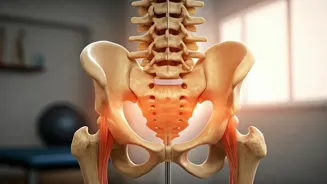Understanding Back Pain
Back pain, particularly in those over 50, is often linked to weaker core muscles, decreased flexibility, poor posture, or age-related spinal changes. Activities
like bending, lifting, or prolonged sitting can strain the lower back. Several exercises address this, with the glute bridge emerging as a particularly effective option. It targets the gluteal muscles, hamstrings, and lower back while engaging the core to stabilise the spine. Regular execution strengthens these key muscles, improves posture, supports the pelvis, and reduces chronic lower back pain in older adults. Addressing back pain is essential for maintaining mobility and a good quality of life, making exercises like glute bridges an important part of a fitness routine.
Benefits of Glute Bridges
Glute bridges offer several advantages for adults over 50. They actively reduce lower back pain by strengthening the glutes and core muscles, easing pressure on the spine. Furthermore, these exercises improve posture by strengthening the glutes and hamstrings, which support the pelvis and prevent slouching. Strong glutes also act to prevent injuries, decreasing the risk of issues in the hips, knees, and lower back. Consistent execution is essential; performing glute bridges 3–4 times per week can build glute strength and reduce back pain. Consistent practice enhances posture, stability, and overall lower body strength, contributing to better physical health and well-being.
How to Perform
Performing a glute bridge correctly is key to maximising its benefits. Start by lying on your back with your knees bent and feet flat on the floor, hip-width apart, and arms by your sides, palms facing down. Next, engage your core by tightening your abdominal muscles to stabilise your spine. Then, press through your heels and lift your hips towards the ceiling until your body forms a straight line from your shoulders to your knees. Hold this position at the top for 3–5 seconds, squeezing your glutes and keeping your core engaged. Slowly lower your hips back to the floor without arching your lower back excessively. Aim for 10–15 repetitions, completing 2–3 sets. Proper form ensures that the exercise targets the right muscles and avoids strain.
Tips for Success
To get the most out of glute bridges, focus on proper form. Avoid arching your lower back, ensuring that the lift originates from your glutes, not your spine. Maintain a strong core and relaxed shoulders throughout the movement to maximise stability. Practice controlled movement by executing each repetition slowly and deliberately to fully engage the muscles. Focus on squeezing your glutes at the top and maintaining proper breathing for better muscle activation. As you become more comfortable, gradually increase the difficulty. This can include single-leg glute bridges or using a resistance band around your thighs. Another option is elevating your feet on a bench for added challenge, helping to progress your workout and continue improving your strength and stability.




